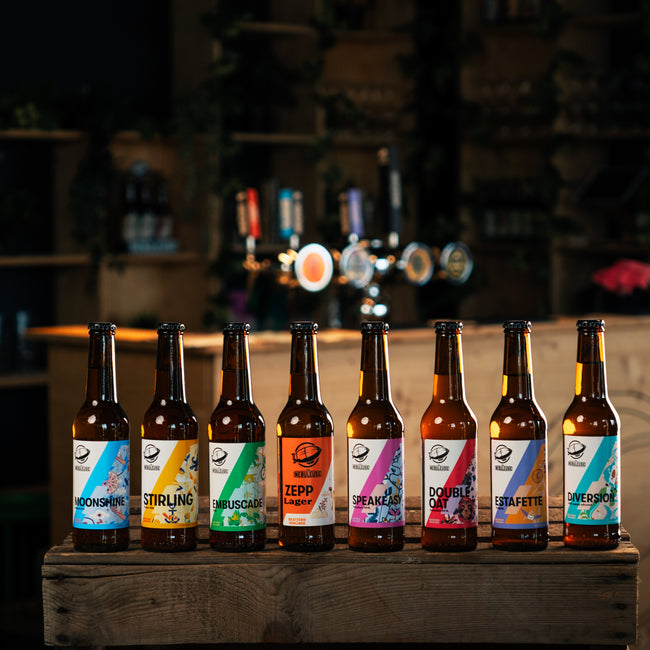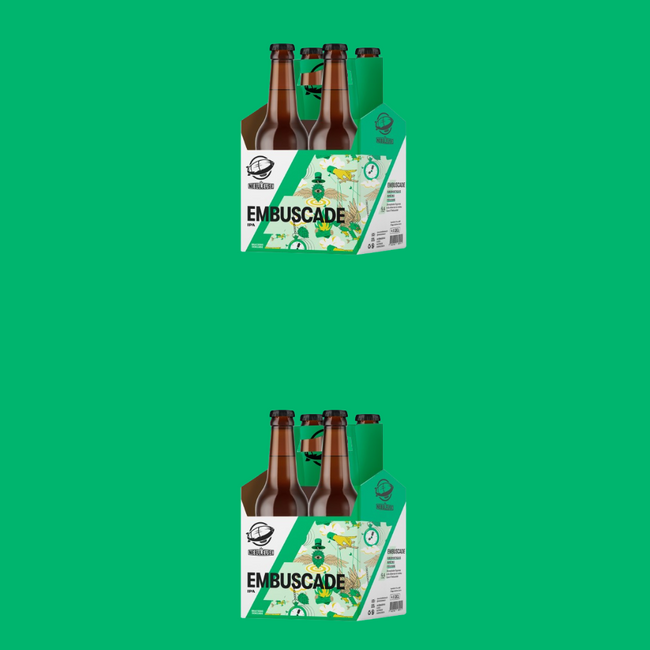Understanding Bitterness in Beer: Beyond IBUs

Ah, bitterness! That sensation that makes novices frown and enlightened connoisseurs smile with pleasure. It is to beer what structure is to wine: a fundamental pillar of taste, but also one of the most complex characteristics to grasp. Like many aspects of craft beer , bitterness hides its game well behind numbers and measurements that only tell part of the story.
The Many Faces of Bitterness
From IBUs to perception: deciphering a complex measurement
IBUs (International Bitterness Units) are a bit like the gold standard for bitterness in beer. But be careful, it's not a simple linear scale as you might think. These units measure the concentration of bitter compounds from hops, primarily iso-alpha acids. Science is all well and good, but your palate has its own opinion on the matter.
A 40 IBU beer may seem more bitter than a 50 IBU beer. Why this apparent contradiction? This is where it gets interesting. The beer's body, alcohol content, residual sweetness, and even its drinking temperature all play havoc with our perception of bitterness. Much like the art of food and beer pairing , it's the harmony of the whole that counts.
Hops, master of bitter flavors
Hops, the star of craft brewing , offer us much more than just bitterness. Take Ambuscade , our treacherous and aromatic IPA. Its sharp but balanced bitterness is the result of a careful mix of hot and cold hopping. Alpha acids isomerize during the boil, creating that characteristic sharp bitterness, while cold hopping provides its aromatic notes without adding any additional bitterness.
Each hop variety contributes its own bitter signature. Some American hops create a clean, precise bitterness, while other European varieties offer a more complex, herbal bitterness. It's like having a palette of spices at your disposal : each one adds its own nuance to the final composition.
The Art of Bitter Balance in Beer
Bitterness in the composition of a craft beer
Bitterness isn't just a matter of quantity; it's a matter of balance. In a well-crafted recipe, it plays with other flavors like a tightrope walker. Caramelized malts add a sweetness that can counteract pronounced bitterness. Alcohol, meanwhile, can amplify the perception of bitterness while also adding its own warmth.
There Double Trouble , our spicy and hoppy Double IPA, perfectly illustrates this art of balance. Despite a pronounced bitterness, it remains remarkably balanced thanks to a generous malty base and controlled fermentation. The result? A bitterness that unfolds in stages, like a story told sip after sip.
From paper to palace: when numbers meet sensations
The real magic happens when we go beyond the numbers to explore the sensory dimension of bitterness. It can be as sharp as a saber or as gentle as a caress, fleeting or persistent, simple or complex. This diversity makes the tasting rich and allows every enthusiast to find what they are looking for.
Bitterness also evolves over time. The first few moments on the palate can reveal a lively bitterness that then transforms into more complex notes. Temperature also plays a role: a beer that's too cold will mask some of its bitter subtleties, while the right temperature will allow all the nuances to express themselves.
The bitterness sweet spot varies by style. A well-balanced Pilsner offers a fine, precise bitterness around 25-35 IBUs. A modern IPA can climb to 60-70 IBUs while remaining perfectly drinkable thanks to its balance with malt and hop aromas. And some Double IPAs push the dial even further, creating an intense yet controlled experience.
Beyond IBUs: Bitterness, a taste signature
Bitterness in beer is ultimately like a good novel: it's not so much the number of pages that matters, but how the story is told. It can be the main character who takes center stage or a subtle supporting role that enriches the narrative.
IBUs remain a useful tool for brewers, but the true measure of bitterness is measured in the glass. It's in this intersection of brewing science and tasting that the full complexity and beauty of bitterness in craft beer is revealed. A complexity that makes each sip a new discovery, an invitation to explore ever further the flavor possibilities of this ancient brew.









